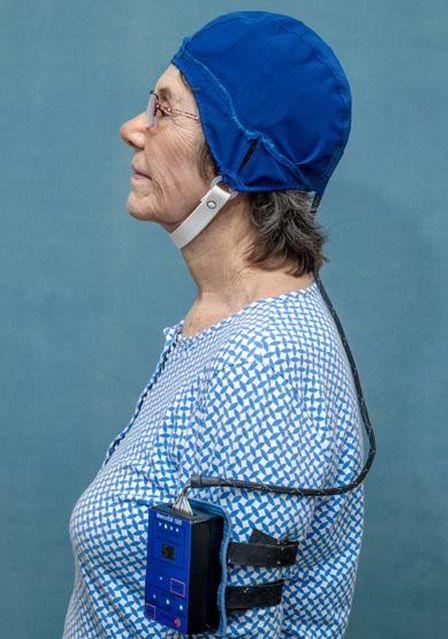A head device that zaps the brain with electromagnetic waves in the radiofrequency range twice daily for two months. The device had turned back the clock a year on their disease.
Eight patients with mild or moderate forms of Alzheimer’s Disease took part in a clinical trial showing a reversal of cognitive impairment, after two months of in-home treatment.
All participating patients were using a wearable head device with electromagnetic waves in the radiofrequency range twice daily for one hour. While using the cap, users could perform nearly all household activities during treatments.
Seven of the patients enhanced cognitive performance as measured by their ADAS-cog score, which is the benchmark for testing AD therapeutics. The results showed an improvement of at least four points on the scale, which was considered clinically significant.
For Alzheimer’s patients score worsen by about four points a year. In this case, the company suggesting the device had turned back the clock a year on their disease.
The device called TEMT developed by NeuroEM Therapeutics. The study published in the Journal of Alzheimer’s Disease gives hope to millions suffering from brain-destroying disorder.
TEMT is directly affecting the Alzheimer’s disease process by penetrating the brain cells to break up toxic clumps of proteins called amyloid-beta and tau, the formation of which is thought to be the cause of Alzheimer’s.
When these are cleared, previously-blocked nerve cells in the brain are, in theory, able to return to functioning as normal.
“Perhaps the best indication that the two months of treatment was having a clinically-important effect on the AD patients in this study is that none of the patients wanted to return their head device after the study was completed”, said Dr. Gary Arendash, CEO of NeuroEM Therapeutics. One patient even exclaimed “I’ve come back.”
Present AD drugs in clinical trials have difficulty getting into the brain cells. They do not have the capability to target the small aggregates of A-beta and tau proteins that causative the diseases.
The company says they have evidence TEMT works but the extent to which it will be able to reverse or prevent the decline caused by Alzheimer’s isn’t known.
“Despite significant efforts for nearly 20 years, stopping or reversing memory impairment in people with Alzheimer’s disease has eluded researchers,” said co-author Amanda Smith, M.D., from the University of South Florida, Byrd Alzheimer’s Institute, the clinical center for the study.
After two months of treatment, none of the eight patients in the study showed any side effect on behavior or physiologic measures. Moreover, post-treatment brain scans revealed no visible induction of tumors or brain bleedings.
Cognitive abilities were improved in other tasks as well. Clinically important increases in word recall were present after treatment for 2 months and at two weeks thereafter. Even a 50% reduction in forgetting was observed in this important task.
In addition, MRI brain scans in individual AD patients revealed evidence of increased communication between neurons in a brain area critical for cognitive integration called the cingulate cortex/cingulum.
The investigators believe that TEMT may be an entirely new therapeutic intervention against Alzheimer’s disease and that bioengineering technology may be succeeding where drug therapy has failed.




